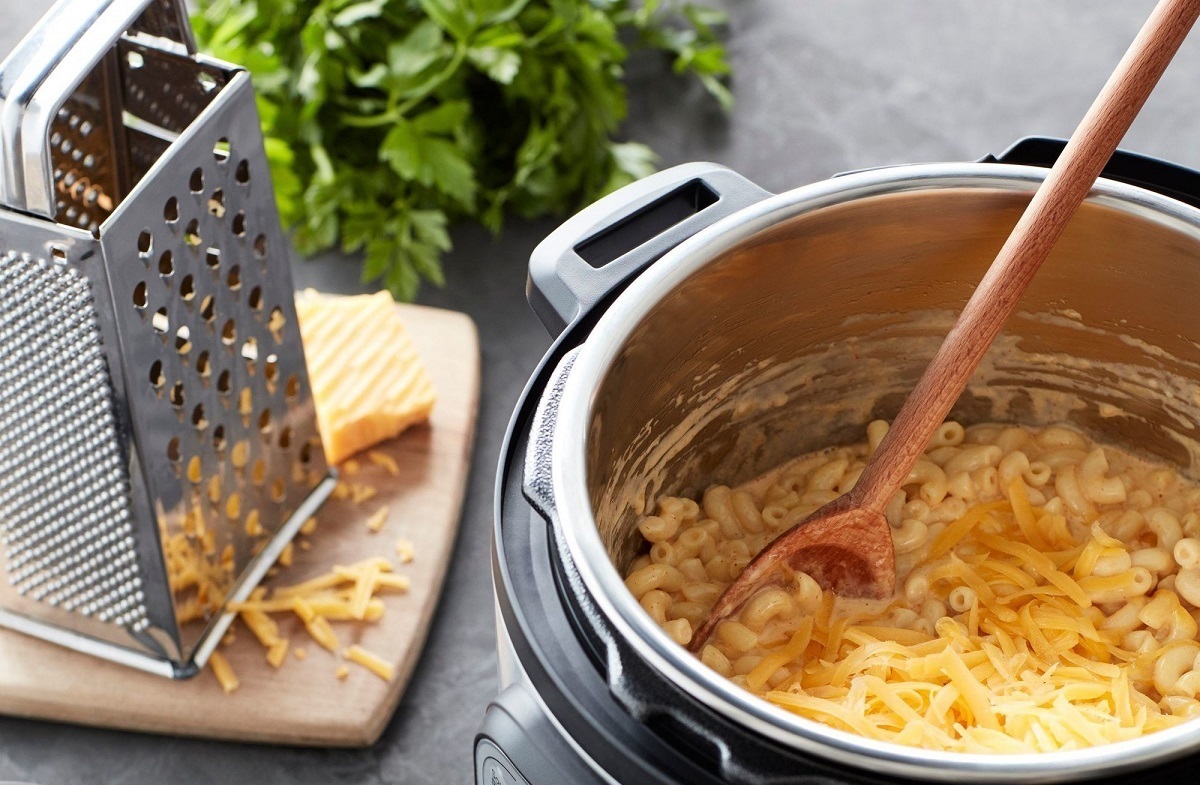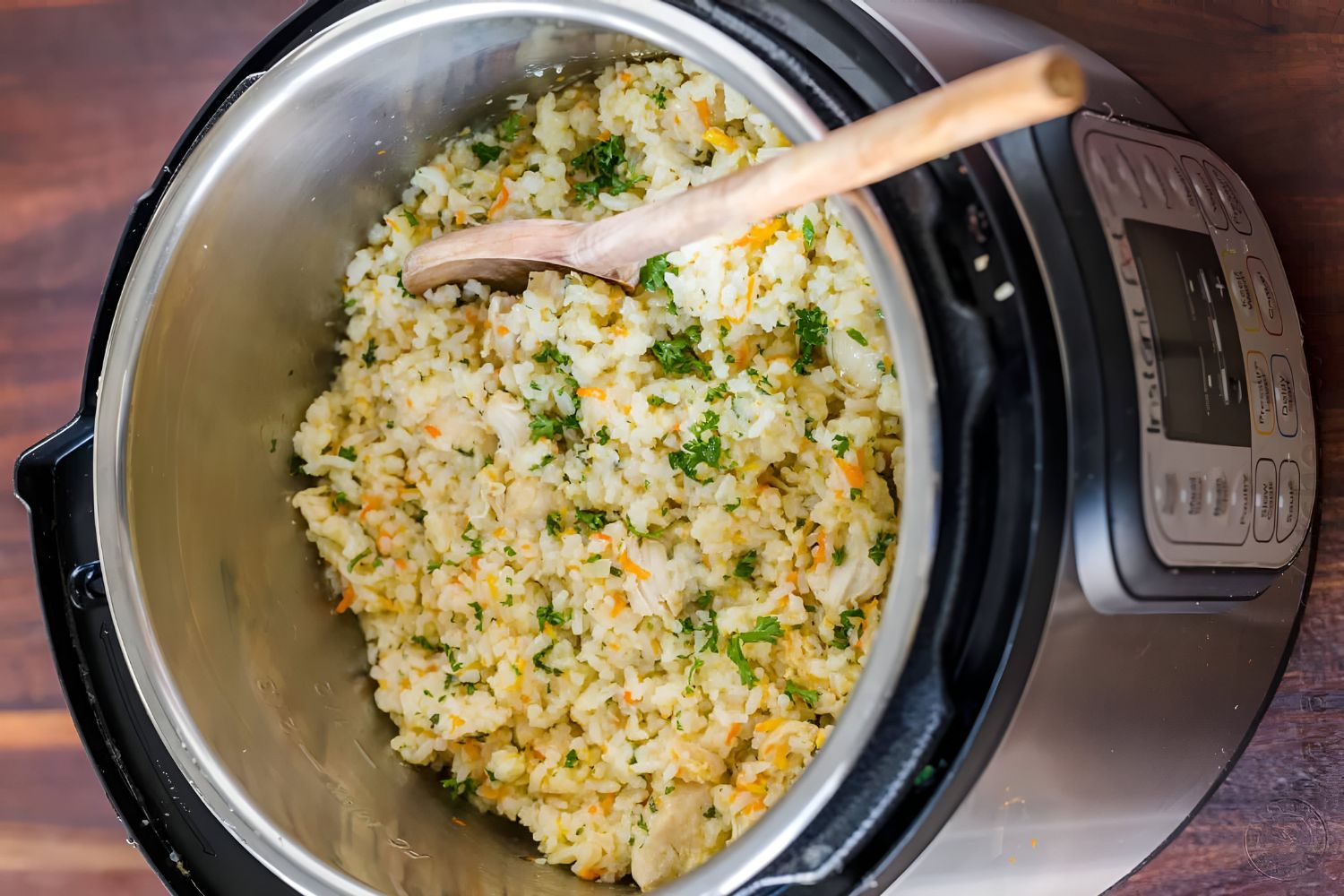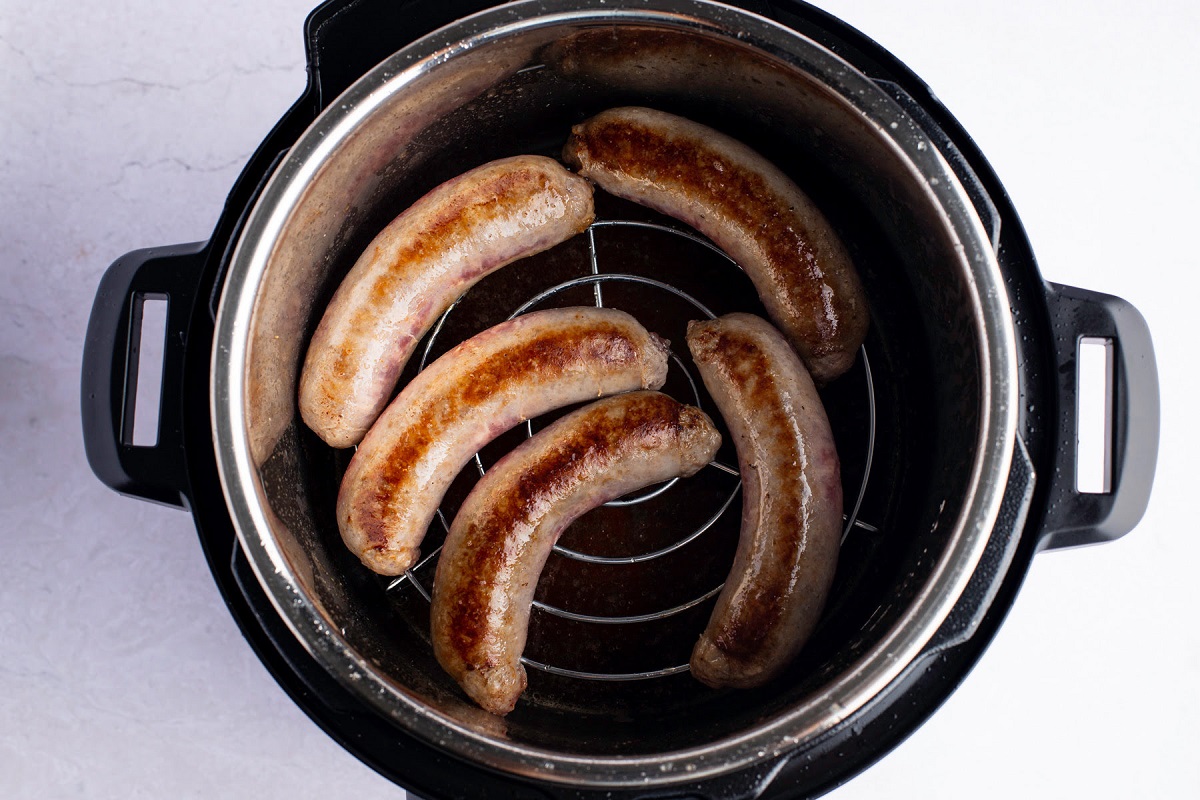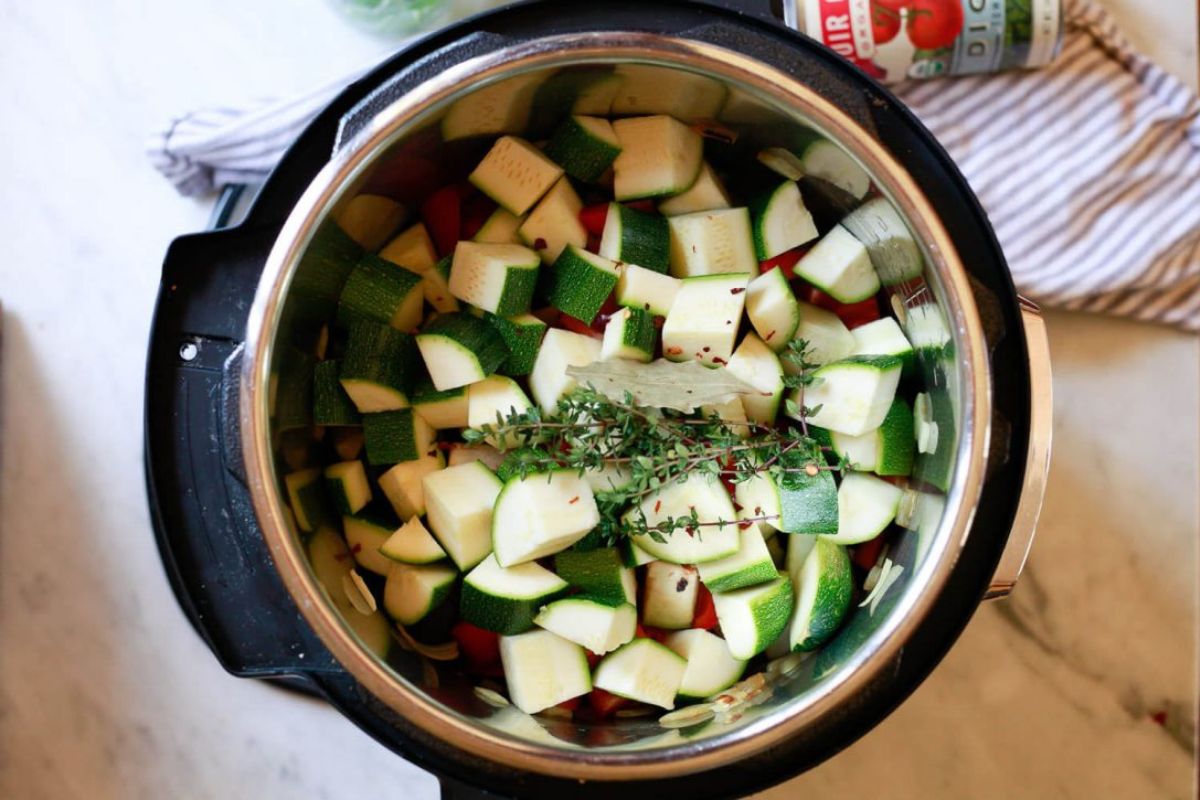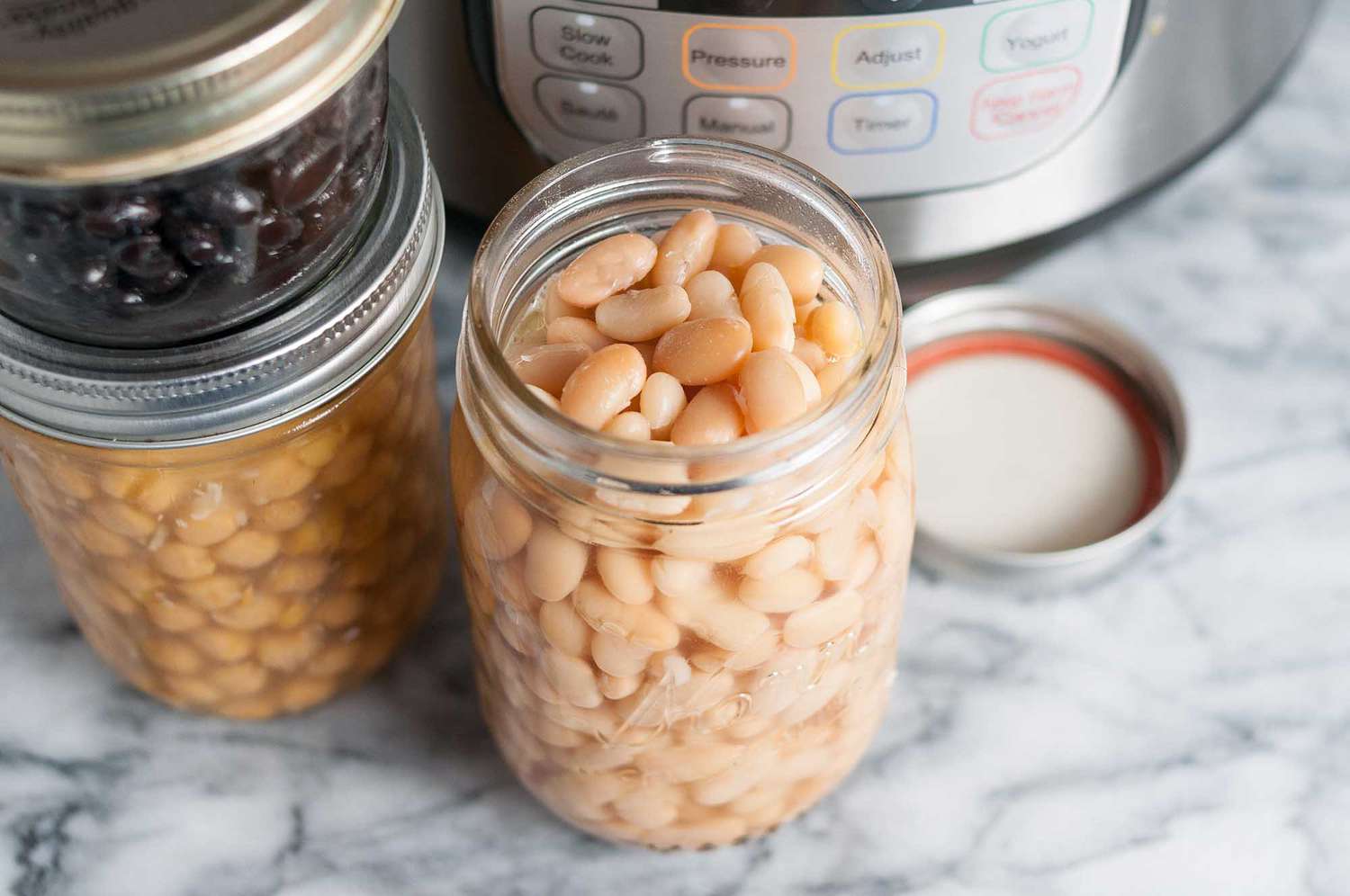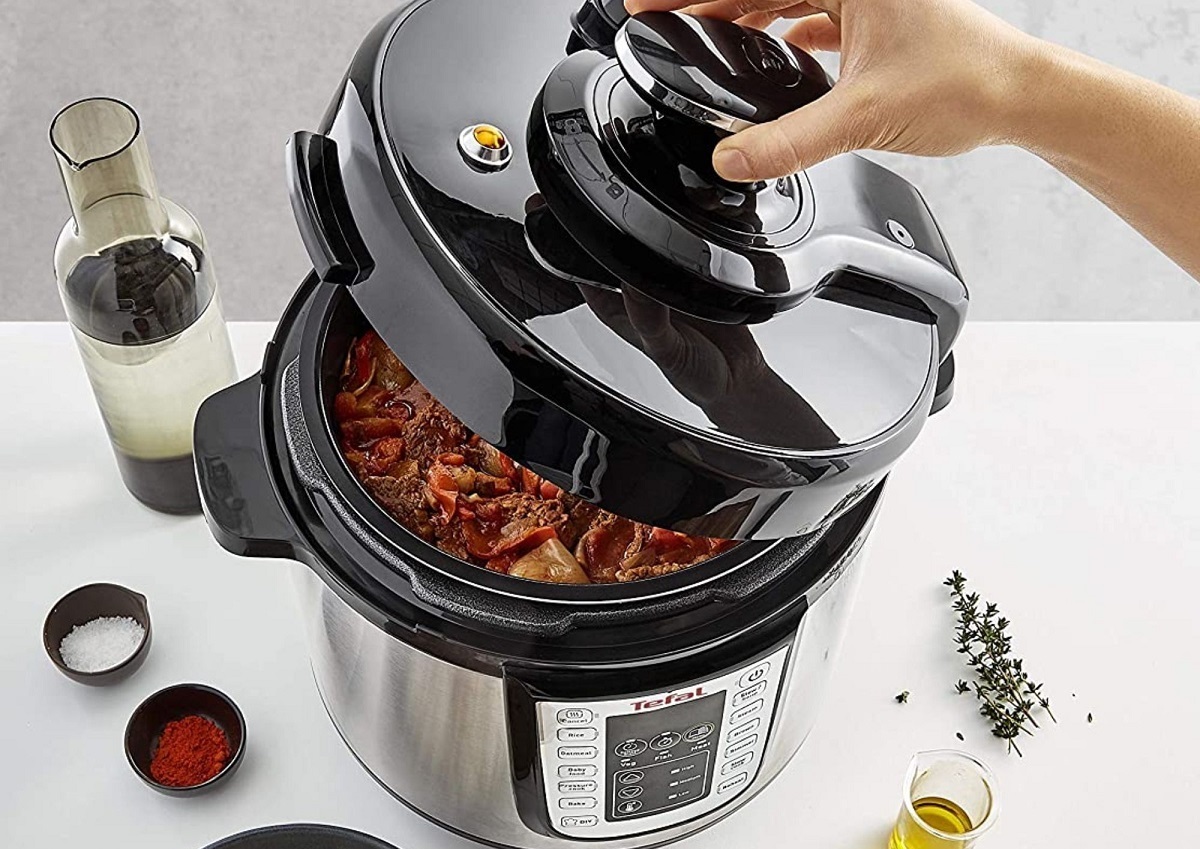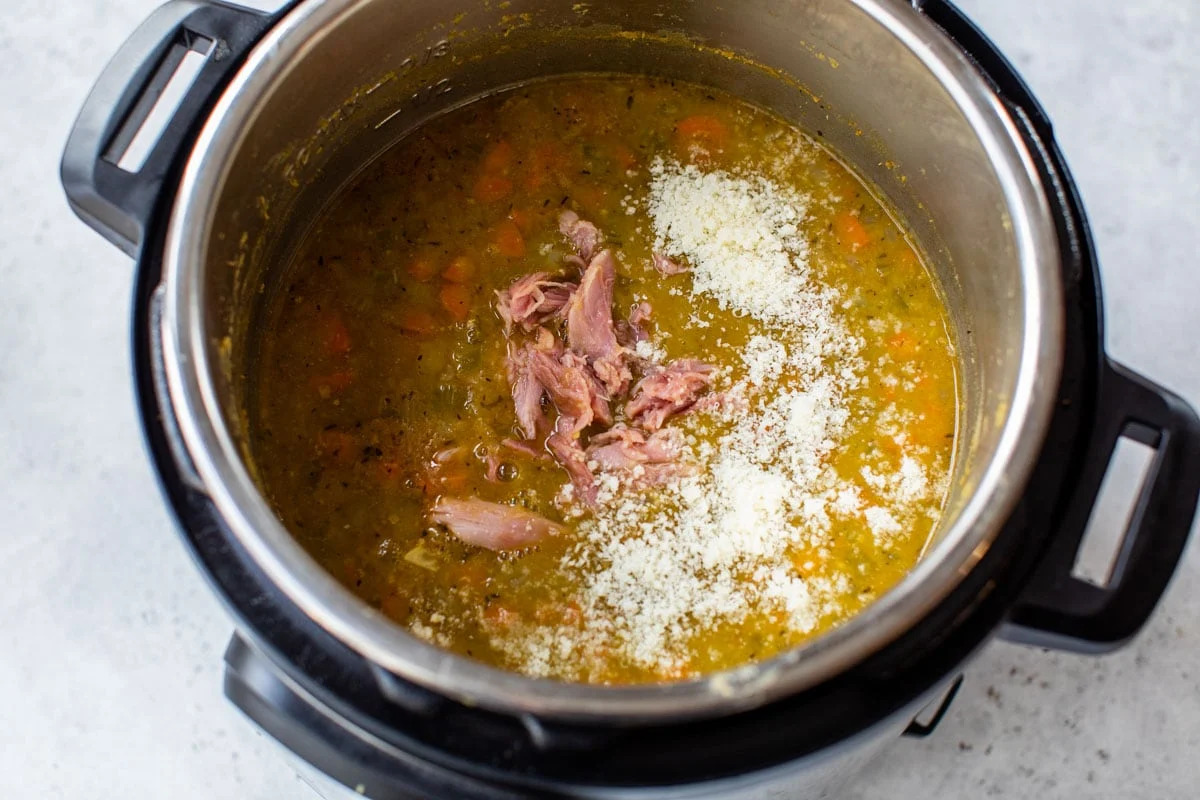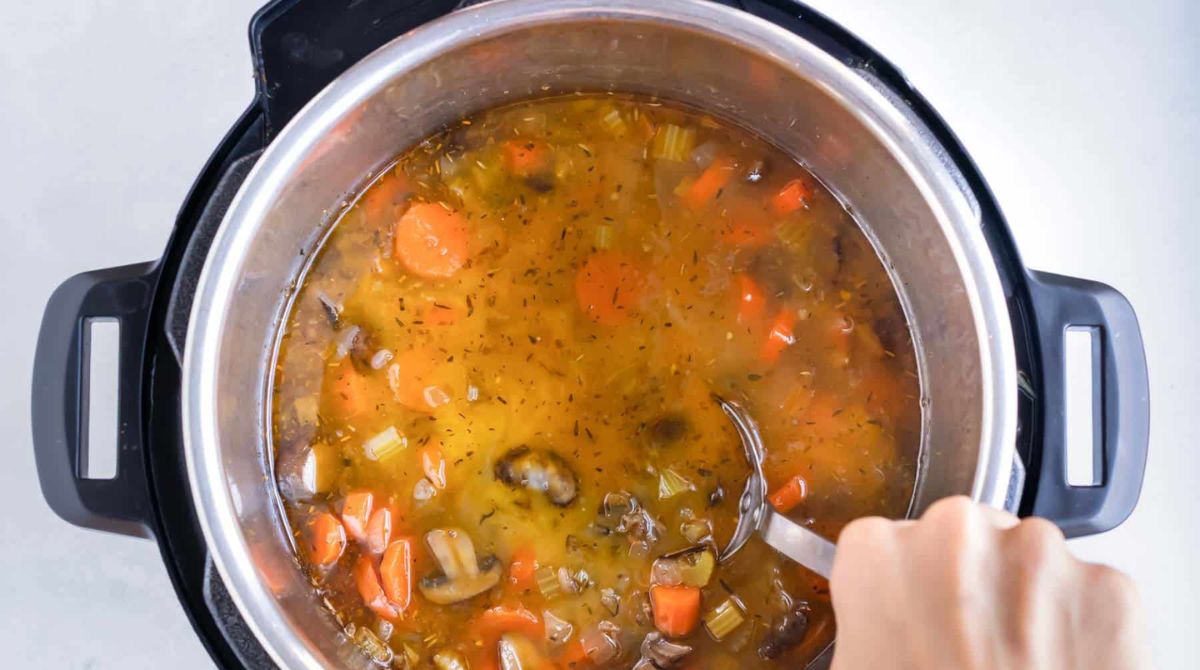Why Sautéing in an Electric Pressure Cooker is Useful
Sautéing is a versatile cooking technique that involves cooking ingredients quickly in a small amount of hot oil or fat. Traditionally, sautéing has been done in a stovetop skillet or frying pan. However, sautéing in an electric pressure cooker offers a range of benefits and convenience that make it a worthwhile cooking method to explore.
Firstly, sautéing in an electric pressure cooker allows you to achieve the same caramelization and browning effect as traditional stovetop sautéing. This means you can still enjoy the flavors and textures that come from searing ingredients, even if you’re using a pressure cooker instead of a skillet.
Additionally, sautéing in an electric pressure cooker saves you time and effort. The high heat generated by the pressure cooker’s heating element allows for efficient and fast cooking. This means you can sauté your ingredients quickly, cutting down on overall cooking time.
Moreover, the electric pressure cooker offers the convenience of being an all-in-one cooking appliance. This means you can easily transition from sautéing to pressure cooking without the need for multiple pans or appliances. This convenience is particularly useful when preparing complex dishes that require multiple cooking techniques.
Sautéing in an electric pressure cooker also allows for easy temperature control. Most modern electric pressure cookers come with adjustable temperature settings, which means you can precisely control the heat levels for different types of sautéing. Whether you need a gentle sauté or a high-heat sear, the electric pressure cooker can accommodate your desired cooking style.
Furthermore, sautéing in an electric pressure cooker can be a healthier cooking option. The sealed cooking environment of the pressure cooker retains more of the nutrients and flavors compared to traditional stovetop methods. This means you can enjoy delicious and nutritious sautéed dishes with less oil and fat.
In summary, sautéing in an electric pressure cooker offers a range of benefits, including the ability to achieve caramelization and browning, saving time and effort, convenience of an all-in-one appliance, precise temperature control, and healthier cooking options. So, if you haven’t tried sautéing in your electric pressure cooker yet, it’s time to explore this versatile and efficient cooking method.
Preparing Your Ingredients for Sautéing
Before you start sautéing in your electric pressure cooker, it’s important to properly prepare your ingredients. This ensures that they cook evenly and that you achieve the desired flavors and textures in your dish. Here are some essential steps to follow when preparing your ingredients for sautéing in an electric pressure cooker.
1. Clean and Wash: Start by thoroughly cleaning and washing your ingredients. This removes any dirt or impurities and ensures that your dish is fresh and safe to consume. Clean and trim vegetables, and trim excess fat from meats, if necessary.
2. Dry Ingredients: Ensure that your ingredients are dry before sautéing them. Excess moisture can lead to steaming rather than achieving the desired caramelization and browning. Use a paper towel to pat dry your proteins and vegetables before adding them to the electric pressure cooker.
3. Cut into Uniform Sizes: To ensure even cooking, it’s important to cut your ingredients into uniform sizes. This ensures that they cook at the same rate, avoiding any undercooked or overcooked pieces. Cut vegetables into similar-sized pieces and dice meats into consistent cubes or slices.
4. Seasoning: Season your ingredients with salt and pepper or any other desired spices or herbs before adding them to the electric pressure cooker. This helps enhance the flavors of your sautéed dish.
5. Preheat the Pressure Cooker: Preheating the electric pressure cooker can help achieve better browning and caramelization. Set your pressure cooker to the sauté function at medium-high or high heat, depending on the recipe or your preferred level of heat.
6. Add Oil or Fat: Once the pressure cooker is preheated, add the oil or fat of your choice. Use oils with high smoke points, such as canola, vegetable, or avocado oil. Allow the oil or fat to heat up before adding the ingredients.
7. Adding Ingredients: Carefully add your prepared ingredients to the hot oil or fat in the pressure cooker. Take caution not to overcrowd the cooker, as this can prevent proper browning. Sauté in batches if needed.
8. Stirring and Monitoring: Continuously stir the ingredients with a wooden spoon or a silicone spatula to ensure even cooking and to prevent sticking or burning. Keep an eye on the ingredients and adjust the heat if necessary.
By following these steps, you can ensure that your ingredients are properly prepared for sautéing in an electric pressure cooker. This will help you achieve delicious, flavorful, and evenly cooked sautéed dishes that you can enjoy with ease.
Setting up Your Electric Pressure Cooker for Sautéing
Setting up your electric pressure cooker properly for sautéing ensures that you can achieve the desired results and efficiently cook your ingredients. Here are the steps to follow when setting up your electric pressure cooker for sautéing.
1. Read the Manual: Before using your electric pressure cooker for sautéing, it’s important to read the instruction manual that comes with it. Familiarize yourself with the specific sauté settings and features of your cooker.
2. Attach the Sauté Lid: Most electric pressure cookers come with a separate sauté lid. Attach the sauté lid securely to the cooker to ensure proper heat retention and efficiency during the sautéing process.
3. Select the Sauté Function: Turn on your electric pressure cooker and select the sauté function. This function allows the cooker to reach the desired temperature for sautéing your ingredients.
4. Adjust the Temperature: Depending on your recipe or desired level of heat, adjust the sauté temperature setting on your cooker. Most electric pressure cookers offer adjustable temperature settings, allowing you to customize the heat levels for your sautéing needs.
5. Preheat the Cooker: Preheating your electric pressure cooker is important to ensure proper browning and caramelization of your ingredients. Allow the cooker to preheat for a few minutes before adding the oil or fat.
6. Add Oil or Fat: Once the cooker is preheated, add the oil or fat of your choice. Use oils with high smoke points, such as canola, vegetable, or avocado oil. Allow the oil or fat to heat up before adding the ingredients.
7. Adjust Sauté Time: Some electric pressure cookers allow you to adjust the sauté time. Depending on the nature of your ingredients and the recipe, you may need to increase or decrease the sauté time for optimal results.
8. Monitor the Heat: Keep an eye on the heat of your electric pressure cooker while sautéing. Adjust the sauté temperature setting as needed to maintain the desired cooking temperature. This ensures that your ingredients cook evenly and do not burn.
9. Use the Keep Warm Function: If you need to keep your sautéed ingredients warm before continuing with the cooking process, utilize the keep warm function on your electric pressure cooker. This feature helps maintain the temperature and texture of your sautéed ingredients without overcooking them.
By following these steps, you can set up your electric pressure cooker properly for sautéing. This ensures that you have the right settings, temperature, and conditions to achieve delicious sautéed dishes with ease and efficiency.
Sautéing Tips and Techniques for Electric Pressure Cookers
Sautéing in an electric pressure cooker requires some specific tips and techniques to ensure successful and flavorful results. Here are some essential tips to consider when sautéing in your electric pressure cooker:
1. Heat the Pressure Cooker Properly: Preheating the pressure cooker is crucial for achieving the desired caramelization and browning. Make sure to preheat the cooker for a few minutes before adding the oil or fat.
2. Use the Sauté Function: Take advantage of the sauté function on your electric pressure cooker. This function allows for precise temperature control and even heating, ensuring that your ingredients cook evenly.
3. Adjust the Heat: Depending on the recipe and the ingredients you’re sautéing, adjust the sauté temperature setting on your electric pressure cooker. Lower heat settings are ideal for gentle sautéing, while higher heat settings are suitable for quick searing.
4. Stir Frequently: To prevent sticking or burning, stir your ingredients frequently during sautéing. Use a wooden spoon or a silicone spatula to gently toss and turn the ingredients for even cooking.
5. Brown in Batches: If you have a large amount of ingredients to sauté, it’s best to do it in batches. Overcrowding the pressure cooker can lead to steaming instead of proper browning. Sautéing in batches ensures that all ingredients have enough space and contact with the heat.
6. Add Aromatics: Enhance the flavor of your sautéed dishes by adding aromatics like garlic, ginger, onions, or spices. Sauté these ingredients in the oil or fat before adding the main ingredients for an extra layer of flavor.
7. Deglaze the Cooker: After sautéing your ingredients, there may be browned bits stuck to the bottom of the pressure cooker. Deglaze the cooker by adding a small amount of liquid, such as broth or wine, and scraping the bottom with a wooden spoon. This will incorporate those flavorful bits back into your dish.
8. Adjust Seasoning: Taste your sautéed dish before serving and adjust the seasoning if necessary. Add salt, pepper, or other spices and herbs to enhance the flavors to your liking.
9. Utilize Sauteed Ingredients: Sautéed ingredients can be used as a base for various recipes. They can serve as a flavorful foundation for soups, stews, or pasta dishes. Get creative and explore different ways to incorporate your sautéed ingredients into delicious meals.
By following these tips and techniques, you’ll be able to master sautéing in your electric pressure cooker. Experiment with different ingredients and flavors to create mouthwatering sautéed dishes that will impress your family and friends.
Common Mistakes to Avoid When Sautéing in an Electric Pressure Cooker
Sautéing in an electric pressure cooker can yield delicious results, but it’s important to be aware of common mistakes that can affect the outcome of your dish. By avoiding these mistakes, you’ll be able to achieve perfectly sautéed dishes in your electric pressure cooker. Here are some common mistakes to avoid:
1. Overcrowding the Pressure Cooker: One of the most common mistakes is overcrowding the electric pressure cooker. Overcrowding prevents proper browning and caramelization of the ingredients. The heat becomes trapped, resulting in steaming rather than sautéing. To avoid this, sauté ingredients in batches to allow enough space for proper cooking.
2. Not Preheating the Cooker: Preheating the electric pressure cooker is crucial for achieving the desirable flavors and textures in sautéing. Not preheating the cooker can lead to uneven heating and longer cooking times. Take a few minutes to preheat the cooker before adding the oil or fat and the ingredients.
3. Using Insufficient Oil or Fat: Sautéing requires a small amount of oil or fat to achieve the desired caramelization and browning. Using too little oil or fat can result in ingredients sticking to the pot and not achieving the desired flavors. Be sure to use an adequate amount of oil or fat to coat the bottom of the pressure cooker evenly.
4. Not Adjusting the Sauté Temperature: Most electric pressure cookers allow for adjustable temperature settings during sautéing. Not adjusting the temperature can lead to uneven cooking and can cause ingredients to burn. Depending on the recipe and desired browning level, ensure that you set the appropriate sauté temperature on your cooker.
5. Neglecting Stirring: Stirring is crucial during the sautéing process, as it ensures even cooking and prevents sticking or burning. Neglecting to stir the ingredients can result in uneven browning and overcooking. Use a wooden spoon or spatula to gently stir the ingredients throughout the sautéing process.
6. Adding Ingredients Too Soon: It’s essential to preheat the cooker and heat the oil or fat sufficiently before adding the ingredients. Adding ingredients too soon can result in the food absorbing excess oil, becoming greasy, and not achieving the desired browning. Allow the oil or fat to heat up properly before adding the ingredients.
7. Overcooking Ingredients: Sautéing is a quick cooking method, so it’s crucial to avoid overcooking the ingredients. Overcooking can lead to loss of texture and flavor. Keep a close eye on the ingredients and remove them from the heat once they are properly sautéed. Remember that residual heat will continue cooking the food even after the heat is turned off.
8. Not Adjusting Seasoning: Another common mistake is failing to adjust the seasoning of sautéed dishes. Sautéed ingredients can lose some seasoning during the cooking process. Taste the dish before serving and adjust the seasoning with salt, pepper, or other spices as needed to enhance the flavors.
By avoiding these common mistakes, you will be able to achieve perfectly sautéed dishes in your electric pressure cooker. With practice and attention to detail, you’ll soon become adept at sautéing a wide variety of flavorful and delicious meals.
Recipes to Try Sautéing in an Electric Pressure Cooker
Sautéing in an electric pressure cooker opens up a world of culinary possibilities. Here are a few delicious recipes that you can try sautéing in your electric pressure cooker:
1. Lemon Garlic Shrimp:
Ingredients:
– 1 pound of shrimp, peeled and deveined
– 2 tablespoons of olive oil
– 4 cloves of garlic, minced
– 1 lemon, juice and zest
– Salt and pepper to taste
Instructions:
– Set your electric pressure cooker to sauté mode and heat the olive oil.
– Add the minced garlic and sauté until fragrant.
– Add the shrimp and sauté for about 2 minutes, until they turn pink and are cooked through.
– Stir in the lemon juice and zest.
– Season with salt and pepper to taste.
– Serve the sautéed shrimp with a side of rice or pasta for a quick and flavorful meal.
2. Mediterranean Chicken and Vegetables:
Ingredients:
– 4 boneless, skinless chicken breasts
– 2 tablespoons of olive oil
– 1 onion, sliced
– 1 red bell pepper, sliced
– 1 yellow bell pepper, sliced
– 1 zucchini, sliced
– 1 teaspoon of dried oregano
– 1 teaspoon of dried basil
– Salt and pepper to taste
Instructions:
– Set your electric pressure cooker to sauté mode and heat the olive oil.
– Sauté the chicken breasts until browned on both sides. Remove from the cooker and set aside.
– Add the sliced onion, bell peppers, and zucchini to the cooker and sauté until slightly softened.
– Stir in the dried oregano and basil, and season with salt and pepper.
– Return the chicken breasts to the cooker, placing them on top of the sautéed vegetables.
– Close the lid of the pressure cooker and cook on high pressure for 10 minutes.
– Release the pressure and carefully open the lid.
– Serve the sautéed chicken and vegetables with a side of couscous or quinoa for a healthy and satisfying meal.
3. Sautéed Mushrooms and Spinach Pasta:
Ingredients:
– 8 ounces of pasta of your choice
– 2 tablespoons of butter
– 1 pound of mushrooms, sliced
– 3 cloves of garlic, minced
– 4 cups of fresh spinach leaves
– Salt and pepper to taste
– Grated Parmesan cheese for serving
Instructions:
– Cook the pasta according to the package instructions. Drain and set aside.
– Set your electric pressure cooker to sauté mode and melt the butter.
– Add the sliced mushrooms and sauté until they release their liquid and start to brown.
– Stir in the minced garlic and sauté until fragrant.
– Add the fresh spinach leaves and sauté until wilted.
– Season with salt and pepper to taste.
– Add the cooked pasta to the sautéed mushrooms and spinach, tossing to combine.
– Serve the sautéed mushrooms and spinach pasta with grated Parmesan cheese on top for a comforting and flavorful meal.
Get creative and explore different sautéed recipes with your electric pressure cooker. From meats to vegetables and everything in between, you’ll find that sautéing in your electric pressure cooker can elevate your cooking and bring out amazing flavors in your dishes.
Cleaning and Maintenance Tips for Your Electric Pressure Cooker After Sautéing
Proper cleaning and maintenance of your electric pressure cooker are essential for its longevity and continued performance. After sautéing in your cooker, follow these tips to ensure that it remains in great condition:
1. Allow the Cooker to Cool: Before cleaning your electric pressure cooker, allow it to cool down completely. This prevents any accidental burns and ensures safe handling during the cleaning process.
2. Remove and Clean the Sauté Lid: If your electric pressure cooker has a removable sauté lid, detach it carefully and clean it separately. Wash the lid in warm, soapy water using a gentle sponge or cloth. Rinse thoroughly and dry before reattaching it to the cooker.
3. Clean the Inner Pot: Remove the inner pot from the cooker and wash it with warm, soapy water. Use a non-abrasive sponge or cloth to remove any residue or stuck-on food particles. If necessary, let the pot soak in warm soapy water for a short while before washing. Rinse and dry the inner pot thoroughly.
4. Clean the Sealing Ring: The sealing ring in the electric pressure cooker’s lid can absorb food odors. Remove the sealing ring and wash it separately with warm, soapy water. Ensure that you clean all the crevices to remove any residue or odor. Rinse it thoroughly and let it air dry.
5. Wipe Down the Exterior: Use a damp cloth to wipe down the exterior of your electric pressure cooker. This helps remove any spills or stains that may have occurred during sautéing. Avoid using abrasive cleaners or scouring pads that can damage the cooker’s surface.
6. Check and Clean the Vent and Valve: The vent and valve on your electric pressure cooker may accumulate residue from cooking. Check these components and clean them if necessary. Refer to your cooker’s manual for proper instructions on how to clean the vent and valve.
7. Check the Gasket: The gasket or rubber sealing ring on the pressure cooker’s lid is essential for ensuring a proper seal. Regularly inspect the gasket for any signs of wear or damage. If needed, replace the gasket following the manufacturer’s guidelines.
8. Store Properly: Once the cooker is clean and dry, store it in a cool, dry place. Avoid storing it near heat sources or in direct sunlight, as this can affect its performance and longevity.
Regular cleaning and maintenance of your electric pressure cooker after sautéing will help ensure that it continues to function effectively and extends its lifespan. By following these tips, you can keep your cooker in optimal condition for many delicious meals to come.







